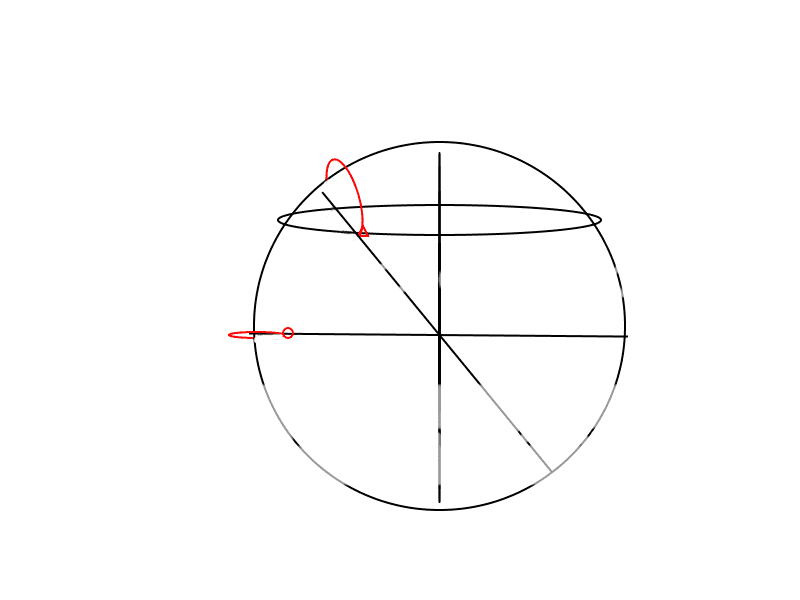I was just about to weigh in with this exact "north pole" explanation, but I saw that you had already done so. Great post.
To add to this description just a little bit- I believe one reason for this effect, is that the shooter/bullet trajectory is perpendicular to the surface of the earth (parallel to the axis of gravity), regardless of geographical location, and the only place on earth that this perpendicular axis is completely parallel to the rotation axis of the earth, is shooting in an east/west direction, right at the equator. Here's a quick sketch that was drawn by my kid in grade 1 (cough), illustrating this point. At the equator when shooting E-W, there is no horizontal component of the earth's motion, relative to the trajectory of the bullet. When shooting the same direction further north, the axis' are no longer completely parallel, introducing a horizontal component to the earth's rotational motion, relative to the axis of the bullet trajectory (parallel to gravity's axis).
The circle is the earth, the black lines intersecting the earth's axis' represent the axis of the poles, and the equator. The red triangle and circle are the shooter's position, and the red arcs are the bullet's trajectory at two different geographical locations. I made the northern trajectory's E-W shooting direction exaggerated to more easily illustrate the point. The black line intersecting the northern shooter and the center of the earth is the axis of gravity.

I agree with your equator shot description, there is n horizontal coriolis along the equator (which is why hurricanes cannot form there) but on the northern one I dont believe there is a gravitational effect to horizontal coriolis, coriolis in the horizontal is purely due to the geometry of a rotating sphere. I think you are veering into the eotvos effect, which some people also call "vertical" Coriolis, which is gravitational, and a the force of gravity on a projectile chamges as result of going "with" or "against" the earths rotation. The extreme example is a projectile fired with "escape" velocity; gravity has been offset completely.
By the way, that top path in red is very close to an illustration of a "great circle" route, the true shortest distance between two points on a sphere. Aircraft, being steerable, can and should take advantage of that and fly a curved path to their "target" to save fuel and time. Their trajectories are measured in hundreds or thousands of miles instead of yards so it actually makes a difference. Dont ask me to do the math but a great circle route, bending the tractory toward a pole instead of a straight line, over a thousand yard line of sight would probably only save a few inches.
